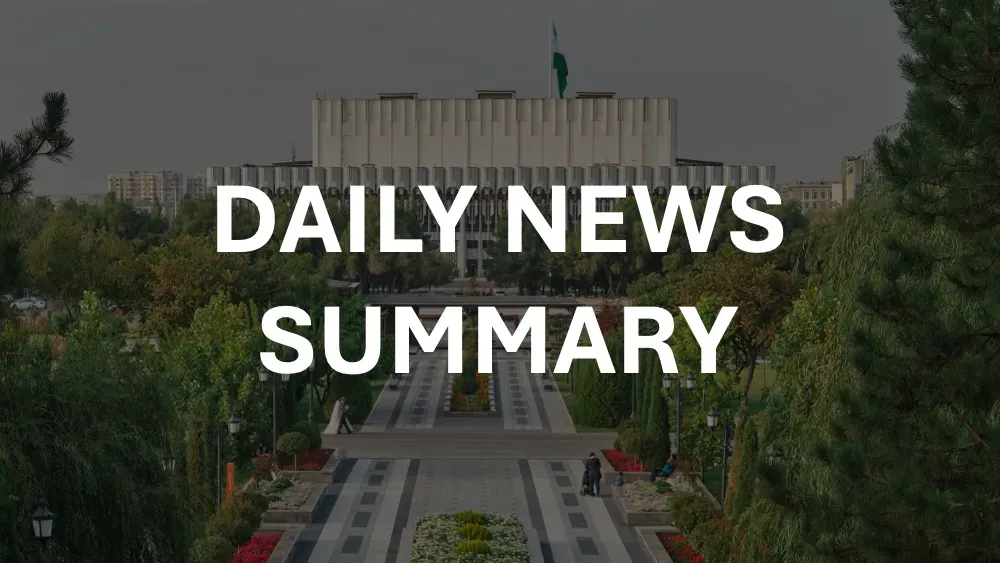📍 Get daily intelligence from Kyrgyzstan and Central Asia. Lexica News delivers local news that shapes global decisions—synthesized from local sources international media misses.
Kyrgyzstan remittances reached $2.5 billion net inflow in 2024, representing a recovery from earlier war-induced disruptions but highlighting persistent vulnerabilities in Central Asia's most remittance-dependent economy. While gross remittance inflows hit $3 billion in 2024—a 10.5% increase from 2023—the ongoing Russia-Ukraine conflict continues reshaping labor migration patterns and exposing deep structural risks in Kyrgyzstan's economy, where remittances historically comprised 30-31% of GDP.
The war's impact extends beyond simple transfer volumes, fundamentally altering banking operations, migration patterns, and economic relationships that sustained over one million Kyrgyz workers in Russia. This analysis examines the documented changes in remittance flows, banking sector adaptations, and emerging migration alternatives as Kyrgyzstan navigates between economic dependence and geopolitical pressures.
Current Remittance Landscape
Volume and Growth Patterns
According to National Bank data, Kyrgyzstan recorded its highest net remittance inflow on record in 2024 at $2.5 billion, marking an 18.6% increase from 2023. Gross inflows reached $3 billion, while outflows decreased to $445.8 million—a 20.6% decline from the previous year. The net increase occurred despite ongoing geopolitical tensions and banking sector disruptions.
Russia maintains overwhelming dominance as the source country, accounting for 93% of all transfers with $2.8 billion flowing from Russian-based Kyrgyz workers in 2024. This concentration represents a marginal decrease from historical levels of 95-97% but demonstrates persistent single-source dependency that amplifies economic vulnerability.
Monthly variations show seasonal patterns consistent with construction and agricultural work cycles. December 2024 recorded $237.8 million in remittances, compared to $229.5 million in November, reflecting typical end-of-year increases as workers send money home for holidays and family obligations.
Historical Context and War Impact
Pre-war remittance flows peaked at $3.09 billion in 2022 before declining to $2.71 billion in 2023—a 12% decrease that reflected initial war disruptions. The 2024 recovery to $3 billion gross inflows suggests adaptation mechanisms have partially compensated for immediate war-related shocks, though underlying vulnerabilities persist.
IMF analysis from 2024 notes that despite strong post-pandemic recovery, the economy remains vulnerable to shocks with poverty rates around 33%. The institution warns that further escalation of the Ukraine war and tightening Western sanctions on Russia could reverse recent trade and migration flows, weaken the Russian economy and ruble, and thereby reduce remittances while weighing on growth and fiscal revenue.
Documented Banking Sector Adaptations
Sanctions Compliance Measures
Kyrgyzstan's banking sector underwent significant restructuring in 2024 following US and UK sanctions on major Russian financial institutions in June 2024. By August, the National Bank of Kyrgyz Republic implemented two key restrictions: prohibiting local banks from operating with sanctioned Russian banks and banning transaction processing for goods not physically delivered to Kyrgyzstan.
Thirteen banks of sixteen suspended transactions with sanctioned Russian entities by end of August 2024, including major institutions like Sberbank, MTS Bank, and T-Bank. The suspensions affected mobile app transfers while maintaining some alternative channels, demonstrating banks' efforts to balance compliance with operational continuity.
SWIFT System Disruptions
International payment systems experienced notable disruptions in 2024. Kookmin Bank announced suspension of USD SWIFT transfers for Kyrgyz banks starting late 2024, forcing institutions to seek alternative correspondent banking relationships. This development illustrated how secondary sanctions pressure extends beyond direct Russia-facing operations.
The US Treasury designated Keremet Bank for conducting significant transactions involving Russia's military-industrial base, specifically for coordinating with Russian authorities to conduct international transfers on behalf of sanctioned Promsvyazbank. This case demonstrated enforcement mechanisms targeting sanctions evasion through Central Asian financial institutions.
Operational Impacts
Banking professionals report Kyrgyzstan is "losing status" as a payment hub for Russian business, with transfers through major banks experiencing delays, doubled commissions, and increased transaction failures. These operational challenges reflect the practical costs of sanctions compliance while maintaining remittance flows.
The National Bank's September 2024 resolution established an October 2025 deadline for supervised organizations to cease processing payments for contracts involving goods traded between foreign states without delivery to Kyrgyzstan, indicating continued tightening of transit-trade restrictions.
Stakeholder Experiences and Adaptations
Migrant Worker Perspectives
Kyrgyz workers in Russia report increased difficulty and costs in sending money home through traditional banking channels. IOM data from 2024 indicates workers increasingly rely on informal transfer mechanisms, cryptocurrency exchanges, and cash-carrying services to circumvent banking restrictions.
Workers describe longer processing times, higher fees, and increased documentation requirements for transfers above certain thresholds. Some report opening accounts with non-sanctioned Russian banks or using third-country routing through Kazakhstan and Turkey to maintain transfer capabilities.
Government Response
Kyrgyz officials balance economic dependence on remittances against international pressure for sanctions compliance. The government's measured approach—implementing restrictions while maintaining alternative channels—reflects recognition of remittances' critical role in domestic economic stability and poverty reduction.
Officials actively facilitate labor migration to alternative destinations, including visa application assistance for workers seeking employment in Turkey, South Korea, and Gulf states. However, these initiatives remain limited in scale compared to Russia-bound migration volumes.
Business Community Impact
Domestic businesses dependent on remittance-fueled consumption report mixed experiences. While 2024's record remittance volumes supported consumer spending, businesses note increased volatility in transfer timing and amounts. Service sector companies, particularly in retail and construction, adapted inventory and payment terms to accommodate irregular remittance flows.
Money transfer operators faced operational challenges as traditional correspondent banking relationships became restricted. Some operators increased focus on mobile money and digital payment solutions, though regulatory frameworks for these alternatives remain developing.
Understand Kyrgyzstan Like an Insider
This analysis draws from extensive research, but the story continues to evolve daily. Lexica synthesizes breaking developments from dozens of Kyrgyz news sources—from mining policy changes to local protests that never make international headlines.
Our daily intelligence briefs help executives, diplomats, and researchers track:
- Regulatory shifts affecting foreign investment
- Local opposition to development projects before they escalate
- Market dynamics that signal opportunity or risk
- Political developments that reshape the business landscape
Operational Context and Costs
Transfer Mechanisms and Costs
Traditional bank transfers, historically the dominant channel, faced increased scrutiny and processing delays in 2024. World Bank data shows average transfer costs for Kyrgyzstan increased from 2.8% in 2023 to approximately 3.5% in 2024, reflecting operational complexity and compliance costs.
Alternative transfer mechanisms gained prominence. Cryptocurrency trading on Kyrgyzstan-registered exchanges showed significant growth, with ruble-linked digital assets providing sanctions-resistant transfer options. Mobile money services and prepaid card systems offered additional channels, though regulatory oversight remained limited.
Regulatory Environment
The National Bank implemented enhanced monitoring requirements for cross-border transactions, including beneficial ownership disclosure and source-of-funds documentation. Banks now maintain detailed records of transaction purposes and counterparties to demonstrate sanctions compliance.
September 2024 regulations established clear prohibitions on processing payments for re-export transactions—goods traded between third countries without physical presence in Kyrgyzstan. This measure targeted trade-based money laundering while creating compliance burdens for legitimate businesses.
Economic Integration Challenges
EAEU membership benefits became complicated by sanctions considerations. While the customs union provides trade advantages, payment processing for EAEU transactions increasingly requires alternative mechanisms avoiding sanctioned Russian banks. This dynamic illustrates how geopolitical tensions affect regional economic integration benefits.
Financial institutions report increased due diligence costs and longer settlement times for EAEU-related transactions. Some banks established separate processing systems for sanctioned versus non-sanctioned counterparties, adding operational complexity and costs.
Regional Comparison and Migration Alternatives
Central Asian Context
Kyrgyzstan's remittance dependency exceeds regional peers. While Tajikistan receives remittances equivalent to 51% of GDP and Uzbekistan 21%, Kyrgyzstan's 30-31% places it among the world's most remittance-dependent economies. This concentration amplifies vulnerability to single-source disruptions.
Regional responses to sanctions pressure vary significantly. Kazakhstan, with greater economic diversification, absorbed some remittance flows as an intermediary destination. Uzbekistan accelerated diversification efforts, establishing bilateral agreements with Germany and expanding partnerships with Turkey and Gulf states.
Alternative Destination Development
Turkey emerged as a growing destination for Kyrgyz workers, with Central Asian arrivals increasing 60.6% in 2023. However, many workers remain in irregular status, limiting formal remittance channels and economic benefits.
South Korea represents a structured alternative through bilateral agreements creating 5,000 job opportunities for Kyrgyz citizens in 2022. These programs offer legal status and formal remittance channels but remain limited in scale compared to Russia-bound migration.
Gulf states continue expanding recruitment of Central Asian workers, though primarily from Uzbekistan and Tajikistan. UAE, Kuwait, and Qatar host massive populations of migrants—88%, 73%, and 77% respectively—but primarily from South and Southeast Asia rather than Central Asia.
Diversification Challenges
Alternative destinations face significant barriers to large-scale adoption. Language requirements, cultural differences, and higher travel costs limit accessibility for many Kyrgyz workers accustomed to Russia's relatively open labor market and cultural familiarity.
Scale remains the critical challenge. Russia historically absorbed over one million Kyrgyz workers, while alternative destinations offer opportunities measured in thousands rather than hundreds of thousands. This gap means diversification efforts, while important for long-term resilience, cannot rapidly replace Russia-dependent remittance flows.
Emerging Migration Patterns
OECD data shows some Central Asian nationals attempting migration to North America and Europe via Latin American routes, with 366% increases in apprehensions in 2022 compared to 2021. These patterns suggest increasing desperation among workers seeking alternatives to Russia-dependent migration.
European destinations show modest increases in Central Asian workers. The UK raised visa caps to 10,000 for Kyrgyz nationals, 8,000 for Uzbeks, and 1,000 for Tajiks in 2024, responding to labor shortages while providing alternative destinations.
Conclusion
Kyrgyzstan's remittance economy demonstrates remarkable resilience in 2024, with net inflows reaching a record $2.5 billion despite ongoing geopolitical tensions and banking sector disruptions. The 93% concentration of flows from Russia, while slightly decreased from historical levels, maintains the fundamental vulnerability that defines Kyrgyzstan as among the world's most remittance-dependent economies.
Banking sector adaptations reflect the complex balance between sanctions compliance and economic necessity. Thirteen of sixteen banks suspended transactions with sanctioned Russian entities while maintaining alternative channels, though operational costs increased and transfer reliability declined. The emergence of cryptocurrency exchanges and informal transfer mechanisms illustrates market responses to regulatory restrictions, though these alternatives operate in legal gray areas with limited oversight.
Migration diversification efforts show promise but remain limited in scale. Alternative destinations including South Korea, Turkey, and Europe offer structured opportunities for thousands of workers, but cannot rapidly replace Russia's absorption of over one million Kyrgyz migrants. The gap between current alternative capacity and historical Russian migration volumes means dependency reduction will require years rather than months to achieve meaningful impact.
IMF projections indicate continued vulnerability to external shocks, with further sanctions escalation potentially reversing recent recovery trends. Key monitoring indicators include monthly remittance volumes, banking sector transaction costs, and migration pattern shifts toward alternative destinations. The sustainability of 2024's remittance recovery depends largely on geopolitical developments beyond Kyrgyzstan's control, highlighting the critical need for continued economic diversification and reduced single-source dependency.
Frequently Asked Questions
What percentage of Kyrgyzstan's remittances come from Russia in 2024?
National Bank data shows 93% of Kyrgyzstan's $3 billion gross remittance inflows originated from Russia in 2024, totaling $2.8 billion. This represents a slight decrease from historical levels of 95-97% but maintains overwhelming single-source dependency that creates significant economic vulnerability to Russian economic conditions and geopolitical developments.
How have Western sanctions affected Kyrgyz banks' ability to process remittances?
By August 2024, thirteen banks of sixteen suspended transactions with sanctioned Russian banks including Sberbank, MTS Bank, and T-Bank. Banks report increased transfer delays, doubled commission rates, and higher transaction failure rates. The US Treasury's designation of Keremet Bank for sanctions violations demonstrates enforcement risks facing institutions processing Russian-linked transactions.
What alternative destinations are available for Kyrgyz migrant workers?
South Korea offers structured alternatives through bilateral agreements creating 5,000 job opportunities, while Turkey sees growing informal migration with Central Asian arrivals increasing 60.6% in 2023. The UK expanded visa quotas to 10,000 for Kyrgyz workers in 2024, and Gulf states provide opportunities primarily in construction and domestic work, though at much smaller scales than Russia's historical absorption capacity.
How much did remittance costs increase due to sanctions pressure?
World Bank monitoring indicates average transfer costs for Kyrgyzstan increased from 2.8% in 2023 to approximately 3.5% in 2024, reflecting operational complexity and compliance costs. Workers report practical impacts including longer processing times, enhanced documentation requirements, and increased minimum transfer amounts for formal banking channels.
What role do cryptocurrency and informal transfers play in sanctions evasion?
Cryptocurrency trading on Kyrgyzstan-registered exchanges shows significant growth, with ruble-linked digital assets providing alternative transfer mechanisms. However, regulatory frameworks remain underdeveloped, and these channels operate in legal gray areas. Workers also increasingly rely on cash-carrying services and informal value transfer systems to circumvent banking restrictions.
How vulnerable is Kyrgyzstan's economy to further sanctions escalation?
The IMF warns that further escalation and tightening Western sanctions could reverse recent trade and migration flows, weaken the Russian economy and ruble, and thereby reduce remittances while weighing on growth and fiscal revenue. With remittances representing 30% of GDP and poverty rates around 33%, Kyrgyzstan faces limited fiscal space to absorb major remittance disruptions.
What measures is the Kyrgyz government taking to reduce remittance dependency?
Government officials actively facilitate labor diversification, including visa application assistance for workers seeking employment in alternative destinations. The National Bank implemented enhanced monitoring and compliance measures while maintaining alternative transfer channels. However, structural economic reforms to reduce remittance dependency remain limited in scope and implementation.
Track Kyrgyzstan with Local Intelligence
The rare earth story exemplifies why local sources matter. While international media reports MOUs and ministerial visits, Uzbek outlets cover the community protests, water disputes, and regulatory changes that actually determine project outcomes.
Lexica delivers what you're missing:
- Daily briefs at 7AM Bishkek time covering 40 top stories from politics to economics
- Full-text synthesis from sources in Kyrgyz
- Searchable archive to track how today's announcements connect to yesterday's promises
- Multi-country coverage across Central Asia for regional context
Whether you're evaluating investment opportunities, monitoring supply chain risks, or analyzing geopolitical developments, local intelligence reveals what international headlines obscure.










